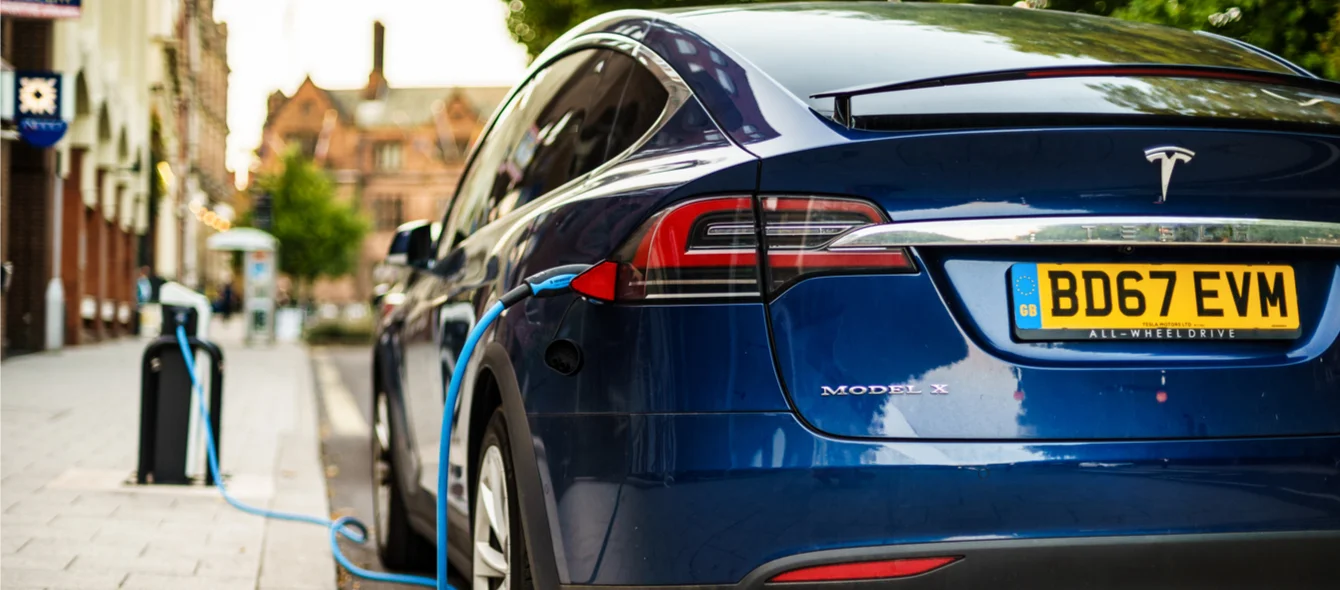UK sales of passenger cars running on gasoline and diesel fell 18% year-on-year in February, while sales of electric vehicles (EVs) rose to take a 5.8% share of new registrations, compared with 2.6% in February 2019. In the first two months of the year, EV sales were up 135% compared with the same period in 2019, according to data from the UK Society of Manufacturers and Traders.
UK new car registrations
% market share Feb 2019UK new car registrations
% market share Feb 2020The figures suggest consumers are starting to adopt EVs ahead of the UK government’s target of phasing out all new combustion engine sales by 2035, a key measure in plans to reach net zero carbon emissions by 2050.
According to the Department for Business, Energy and Industrial Strategy, road transport accounts for 29% of the UK’s total energy consumption and 25% of its total greenhouse gas emissions.
Rising power demand
However, a report, Energising Our Electric Vehicle Transition, published in January by the UK’s energy taskforce, argues that if electric mobility is integrated into the existing electricity system it could bring significant benefits rather than impose major costs.
The report estimates that transport electrification could increase today’s electricity demand by about 30% by 2050. In its Future Energy Scenarios, National Grid estimates that without smart charging and vehicle-to-grid technology, EVs could add 24 GW to peak demand by 2050.
There is also likely to be additional electricity demand for heat as that sector also pursues decarbonisation.
This presents major challenges in terms of building sufficient low carbon generation capacity at the right time so that the system can balance demand and supply.
The report says: “In a future with smart EV chargers, the chargers could react to … imbalances … and reduce demand automatically. This could be a valuable protection to the system as non-critical load would be reduced, therefore minimising disruption to other system users.”
Transforming transport
The trend in EV sales and government targets imply a transformation of the transport system over the next 10 to 15 years.
Ordinary consumers will use more electricity as they shift to EVs, while the onus will be on electricity companies to provide both a reliable recharging system and low carbon power to ensure the increase in electricity demand is environmentally sustainable.
However, electric cars have the potential to play a major stabilising role within the wider electricity system that could significantly reduce overall investment costs for a simple reason — they have batteries.
Power companies are already investing in utility-scale electricity storage as a means of storing surplus power at off-peak times or times of high renewable electricity generation, but the deployment of EVs means a huge increase in battery capacity distributed widely across the country.
There were 273,000 EVs on UK roads at the end of February. According to the Electric Vehicle Database, the average usable battery capacity for EVs based on currently available models is 59 kWh, which means the UK’s current fleet has a total nominal storage capacity of just over 16 GWh. This is near double the storage capacity of the UK’s largest pumped hydropower station Dinorwig, and the UK’s EV population is still in its infancy.
System integration
Decarbonising transport via electrification requires more renewable energy such as solar and wind, both on and offshore. As more renewable energy capacity is built, the amount of reliable baseload electricity it provides grows, but so too does the variation between minimum and peak output, which is not always aligned with demand.
To balance the swings in generation, storage is required and that’s where the EVs come in.
Integrating the two systems – electricity generation and transport – allows the efficient use of variable electricity generation by providing flexibility on the demand side. This avoids duplication in investment, lowering the overall cost of electricity generation and transmission. This should then feed back into lower electricity prices for consumers.
The report says the challenge is to successfully join together “for the first time, two massive and fundamental economic systems, both going through once-in-a-generation transitions: transport and energy.”
Top priorities
Across a raft of proposals, the report identifies three urgent priorities.
- developing standards and codes to ensure the interoperability of all EVs and the electrical system;
- effective local and national planning to enable efficient investment; and
- smart charging for EVs and a smart electrical system to supply them at low cost.
Interoperability essentially means that consumers would not have to change their smart charging points if they change electricity supplier or EV brand. Smart charging is at the heart of system integration, allowing actionable data flows between the e-mobility sector and generation system.
Driver-led transformation
The report says the only way to reap the advantages of system integration is to test each proposal against one fundamental principle – does it work for the EV driver?
Using EVs as a source of demand-side flexibility implies an external actor – for example a transmission system operator – having the ability to set, or, in an emergency, override, a consumer’s charging preferences.
The report recommends that smart charging is made the norm, but that consumers retain an option to opt out of providing services. This in turn will push external actors to make gaining access to EVs attractive to EV drivers.
The report says: “Our belief is that if a positive experience cannot be provided to the EV driver, the potential development of this new market and its ability to contribute to our ‘Net Zero’ ambition will be compromised.”
Smart charging will deliver direct energy bill savings to the consumer, when combined with a time-of-use tariff, and indirect savings through reduced energy system costs, the report argues. The challenge is to make it work for the EV driver to ensure participation.
Only then can the demand-side flexibility of e-mobility be harnessed to offset the investment costs of meeting increased low carbon power demand.
Photo credit: shutterstock.com, nrqemi
